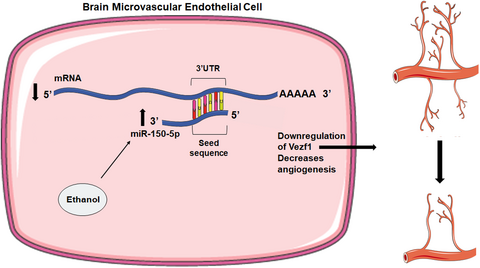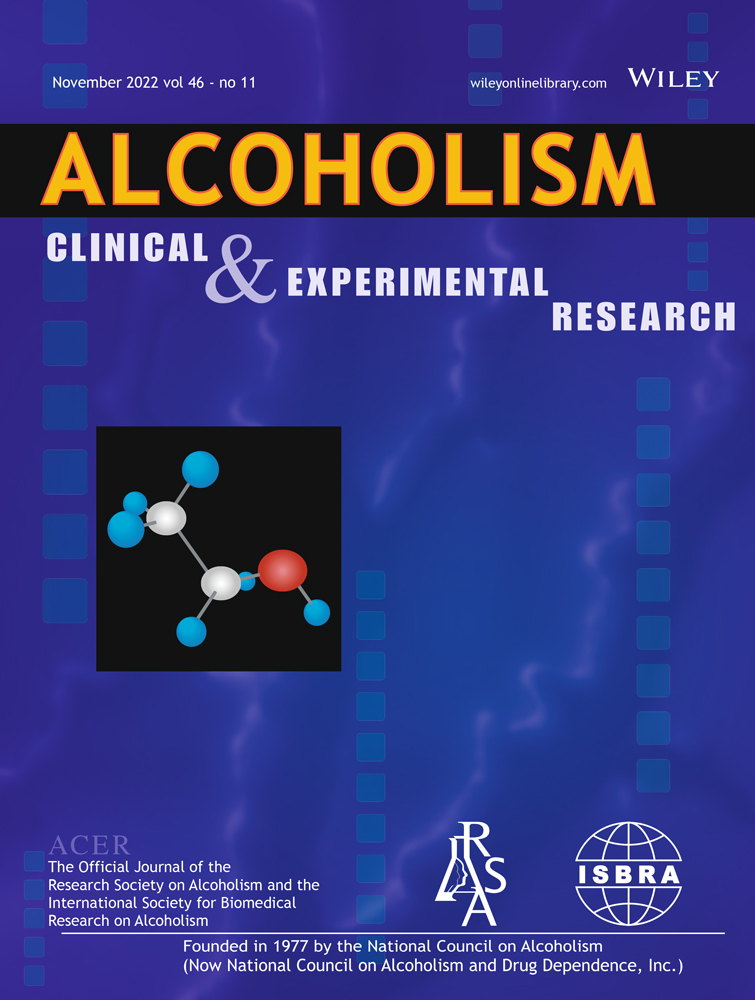MicroRNA-150-5p is upregulated in the brain microvasculature during prenatal alcohol exposure and inhibits the angiogenic factor Vezf1
Abstract
Background
Fetal alcohol spectrum disorders (FASD) occur in children who were exposed to alcohol in utero and are manifested in a wide range of neurocognitive deficits. These deficits could be caused by alterations to the cortical microvasculature that are controlled by post-transcriptional regulators such as microRNAs.
Methods
Using an established mouse model of moderate prenatal alcohol exposure (PAE), we isolated cortices (CTX) and brain microvascular endothelial cells (BMVECs) at embryonic day 18 (E18) and examined the expression of miR-150-5p and potential downstream targets. Cellular transfections and intrauterine injections with LNA™ mimics or inhibitors were used to test miR-150-5p regulation of novel target vascular endothelial zinc finger 1 (Vezf1). Dual-luciferase assays were used to assess the direct binding of miR-150-5p to the Vezf1 3′UTR. The effects of miR-150-5p and Vezf1 on endothelial cell function were determined by in vitro migration and tube formation assays.
Results
We found that miR-150-5p was upregulated and Vezf1 was downregulated during PAE in the E18 CTX and BMVECs. Transfection with miR-150-5p mimics resulted in decreased Vezf1 expression in BMVECs, while miR-150-5p inhibition did the opposite. Dual-luciferase assays revealed direct binding of miR-150-5p with the Vezf1 3′UTR. Intrauterine injections showed that miR-150-5p regulates the expression of Vezf1 in vivo during PAE. miR-150-5p overexpression decreased BMVEC migration and tube formation, while miR-150-5p inhibition enhanced migration and tube formation. Vezf1 overexpression rescued the effects of the miR-150-5p mimic. Alcohol treatment of BMVECs increased miR-150-5p expression and inhibited migration and tube formation. Finally, miR-150-5p inhibition and Vezf1 overexpression rescued the negative effects of alcohol on migration and tube formation.
Conclusions
miR-150-5p regulation of Vezf1 results in altered endothelial cell function during alcohol exposure. Further, miR-150-5p inhibition of Vezf1 may adversely alter the development of the cortical microvasculature during PAE and contribute to deficits seen in patients with FASD.
Graphical Abstract
We show that miR-150-5p was upregulated and its novel target, the endothelial cell-specific transcription factor Vezf1, was downregulated in murine embryonic cortices and derivative brain microvascular endothelial cells following moderate prenatal alcohol exposure (PAE). We demonstrate in vitro and in vivo regulation of Vezf1 by miR-150-5p, and we show that miR-150-5p inhibition and/or Vezf1 overexpression can rescue EtOH-mediated effects on angiogenesis. Our findings highlight a novel mechanism by which PAE may promote vascular dysfunction in the brain during embryonic development.
CONFLICT OF INTEREST
The author declare no conflict of interest.





